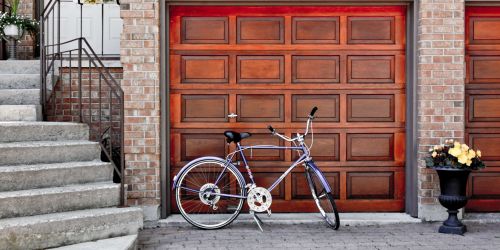Basements are typically where we store things we don’t need or use very often. Along with your garage, these spaces often become repositories for junk we would rather ignore than deal with, which makes them one of the most daunting and time-consuming rooms to pack. The good news? This also makes your basement a great place to start your packing process.
| PRO TIP: It pays not to put off packing this space—starting to pack your basement early will leave you time to organize and host a garage sale, which can be helpful for decluttering, and can also help you save for your move. |
Here are our tips for packing your basement:
Declutter First
The first step to packing your basement is to get rid of all the stuff you don’t use, don’t want, or won’t have space for in your new home. Give yourself enough time to thoughtfully sort through everything in your crawl spaces, closets, and crannies. Try sorting your belongings into four piles: keep, donate, toss, and sell.
If you aren’t sure what to keep and what to get rid of, these items are often good candidates for tossing, selling, or donating:
- Items you haven’t used in over a year
- Clothes that no longer fit, such as winter coats or other seasonal gear
- Old kids’ toys and activities
- Your kids’ old crafts and artwork. Sort through these items and choose one or two memory touchstones, then toss the rest. Particularly sentimental? Photograph the art and school projects and put the pictures into a scrapbook.
For more ideas on what to keep and what to toss, check out our decluttering guide.
Supplies
You’ll need a variety of box sizes to pack your basement:
- Large boxes are ideal for lighter, bulky items.
- Smaller boxes are best for heavier items like books, paper collections, and tools.
Get Packing
Our basements often serve multiple functions. If your basement doubles as a living space, check out our guide to packing your living room. We can also help you pack up your basement laundry room - stay tuned for these tips!
Keep reading for our tips on how to pack other items commonly found in your basement.

Exercise equipment
Home gyms often represent a significant investment, which means you’ll most likely want to move this equipment to your new home (if space allows, of course). Always refer to the owner’s manual, if you have it, for specific moving instructions. Otherwise, these tips can help you pack up your home gym:
Free weights
Free weights, including dumbbells, barbells, and weight plates are designed to be heavy, and that makes them difficult to move.
Lighter weights (less than 10lbs) can be packed into reinforced boxes or crates—just remember not to load too much weight into a single box or create. Fill in any empty spaces with other packing materials to prevent shifting.
Heavier weights should be wrapped in packing paper. If you're moving locally or moving yourself, they can then be placed directly onto the floor of your moving truck. Take care to ensure that they are properly secured to the truck using straps or ropes so they don’t roll around and damage your other belongings. If you've hired movers or are moving long distance and shipping your weights separately, your weights will need to be boxed. If they are too heavy to box, they should be crated or palletized.
You should also remove anything from racks before you move. Falling equipment can cause serious damage or injury.
Workout benches
Workout benches can be moved like any other piece of furniture. Dismantle what you can, then wrap everything in moving blankets. Secure the blankets in place with tape.
Weight machines
Weight machines should always be handled by professional movers. You can, however, make things easier on your movers when moving day arrives:
- Remove weights and disassemble what you can. Store any hardware in plastic bags taped securely to the equipment, and take photos as you disassemble to make it easier to put things back together.
- Secure moving parts with tape, bungee cores, rope, or zip ties.
Treadmills and other equipment
The main challenge when it comes to packing treadmills and other exercise equipment is their size and bulk rather than weight. To manage size, start by removing any loose parts like arms or displays, then wrap these items in bubble wrap and label accordingly.
If your equipment folds, this is most likely all you’ll have to do to prepare it for transit. Simply fold it up, then wrap it in protective moving blankets or stow it in its original box if you still have it.
If your equipment doesn’t fold, dismantle as much as you can. Store any small parts in resealable plastic bags taped securely to the equipment. Wrap each individual part separately in moving blankets, then pack into boxes.

Workshop
If you have a workshop in your basement, this space likely contains some valuable, difficult-to-pack items. For our tips on packing hand tools, power tools, and other tools, check out our guide to packing your garage (coming soon).
Before you start packing up other workshop items like blades, nuts and bolts, and other equipment, dispose of any hazardous materials like paint or varnish. Most movers won’t ship these items anyway.
Blades
Carefully wrap any blades, such as saws, knives, and planers, in old socks, linens, or packing paper, then tape the wrapping in place. Unwrapped blades are more likely to injure you, cause damage, or sustain damage in transit.
| PRO TIP: Pay careful attention to the blade ends, which are especially vulnerable to damage. You may wish to attach a small protector fashioned out of cardboard for extra cushioning. |
Ensure that blades are protected on all sides. Sharp blades should be secured in sheaths, and then wrapped and placed in a rip-proof container, such as a metal or wooden crate.
Nuts and bolts
If small bits of hardware like nuts, bolts, and screws are already sorted and stored in separate containers or drawers, simply secure them in place and you’re good to go. If your storage unit can be wrapped in moving blankets, it’s also a good idea to do this before moving it to ensure everything stays in place.
If these items are loosely stashed away in a drawer or bucket, you’re probably better off taking them to the nearest scrap yard. If you don’t have an immediate need for these items, don’t know what to use them for, or are holding on to them “just in case”, now is the time to get rid of them.
Clamps
Clamps can be packaged together in shrink wrap, or tied with long rags. Smaller clamps can be packed into boxes, while larger clamps should be protected with cardboard, foam, or thick blankets.
Workbench
Disassemble your workbench for easier transport. Remove any drawers, cover the contents with towels, and carry these separately—otherwise, your workbench might be too heavy to move.
Holiday decorations and seasonal items
Chances are, any holiday decor and seasonal items are already packed up. If this is the case, take a moment to ensure they are securely packed. If everything looks solid to you, these boxes are good to go! If boxes are torn or frayed, transfer the items inside (decluttering as you go, of course) into a fresh box.









